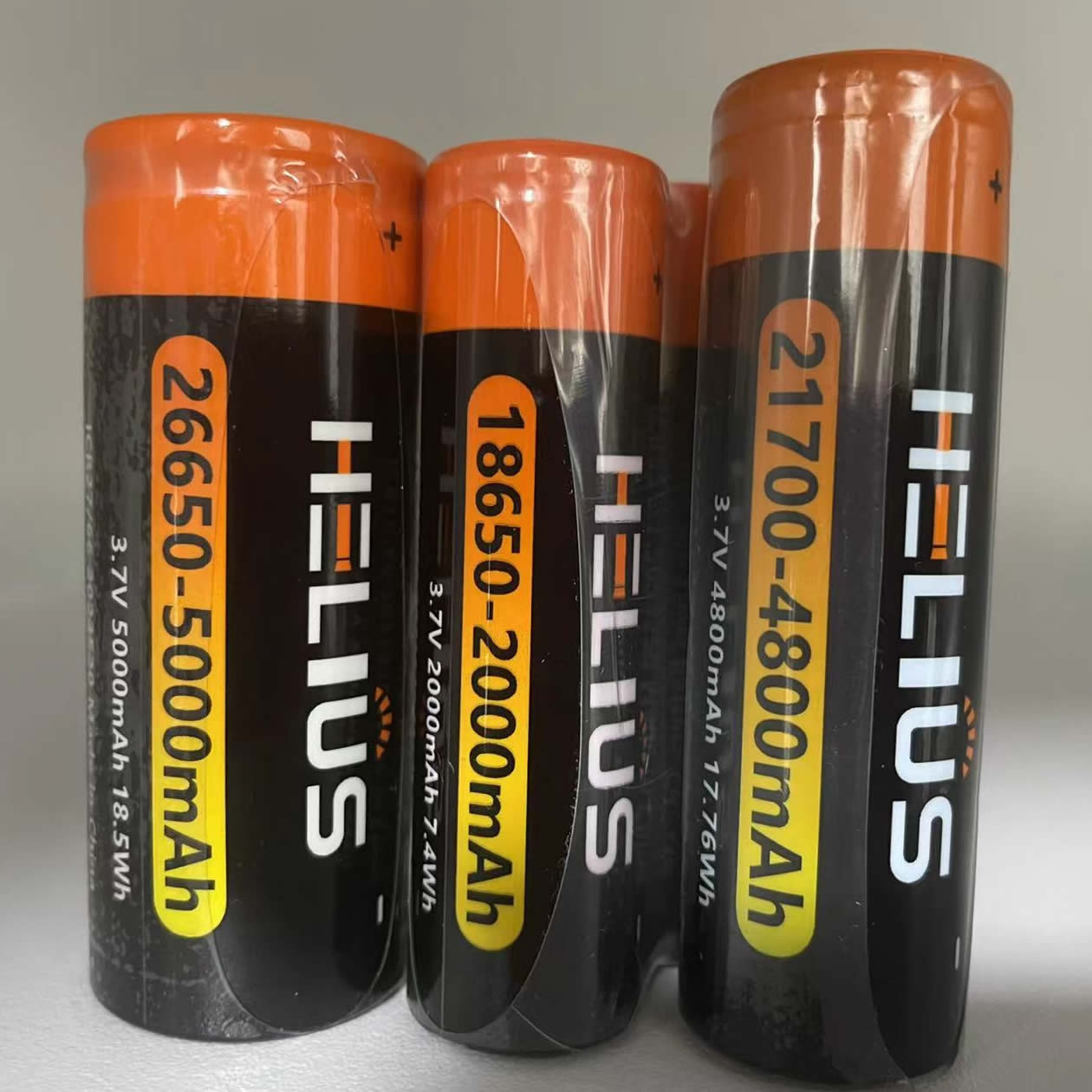The Environmental Impact of Flashlights: Battery Disposal and Recycling

The impact of flashlights extends beyond their utility, as flashlight batteries can harm the environment when disposed of improperly. Toxic chemicals from these batteries seep into soil and water, causing pollution. Recycling batteries reduces this environmental impact by conserving resources and preventing contamination. Practicing responsible battery disposal ensures you protect ecosystems and contribute to sustainable disposal and recycling efforts.
Key Takeaways
Throwing flashlight batteries away the wrong way can hurt soil and water. This can damage nature and make people sick.
Recycling flashlight batteries saves materials and stops harmful chemicals from spreading.
Using rechargeable or solar flashlights makes less trash and helps the planet.
The Environmental Risks of Improper Battery Disposal

Soil and Water Contamination
Improper battery disposal poses a significant threat to the environment. When flashlight batteries are discarded carelessly, harmful chemicals like lead and acid can seep into the soil. This contamination degrades soil quality and disrupts its ability to support plant life. Over time, these pollutants can infiltrate groundwater systems, making water unsafe for consumption. Acid leaks from batteries further exacerbate the problem by harming aquatic ecosystems. Contaminated water sources not only affect wildlife but also pose serious health risks to humans who rely on these resources.
Toxic Chemicals and Ecosystem Damage
Flashlight batteries contain harmful chemicals such as mercury, cadmium, and lead. When these substances are released into the environment, they contribute to toxic waste accumulation. Wildlife often comes into contact with these toxins, leading to severe health issues or death. For example, birds and small mammals may ingest contaminated soil or water, disrupting the food chain. The environmental damage caused by these chemicals extends beyond immediate harm, as ecosystems struggle to recover from prolonged exposure to toxins.
Long-Term Environmental Consequences
The environmental impact of improper battery disposal is not limited to immediate contamination. Over time, toxic waste accumulation leads to irreversible environmental damage. Pollutants from batteries can remain in the soil and water for decades, making it difficult for ecosystems to regenerate. This long-term environmental contamination reduces biodiversity and weakens the resilience of natural habitats. By neglecting proper disposal methods, you contribute to a cycle of environmental degradation that affects future generations.
The Benefits of Recycling Flashlight Batteries
Conserving Resources and Reducing Waste
Recycling flashlight batteries plays a crucial role in conserving valuable resources. Many batteries contain materials like copper, aluminum, and lithium, which can be extracted and reused. By recycling, you help reduce the need for mining new raw materials, which depletes natural resources and harms ecosystems. This process also minimizes waste by keeping used batteries out of landfills. Instead of contributing to growing piles of hazardous waste, you ensure these materials are given a second life. Recycling batteries not only reduces environmental harm but also supports the circular economy, where resources are reused rather than discarded.
Preventing Pollution and Protecting Wildlife
When you recycle flashlight batteries, you prevent harmful chemicals from leaking into the environment. Batteries often contain toxic substances like mercury and cadmium, which can contaminate soil and water if improperly disposed of. Recycling ensures these chemicals are safely managed, reducing the risk of pollution. This action protects wildlife that might otherwise come into contact with contaminated habitats. For example, birds and aquatic animals are particularly vulnerable to the effects of toxic waste. By recycling, you actively safeguard ecosystems and contribute to a healthier environment for all living beings.
Supporting Sustainable Practices
Recycling batteries is a simple yet impactful way to promote sustainability. It prevents dangerous chemicals from entering landfills and reduces greenhouse gas emissions by lowering the demand for energy-intensive raw material extraction. Additionally, recycling conserves natural resources, ensuring a sustainable supply of materials for future battery production. This practice enhances energy efficiency and helps maintain the affordability of batteries. By supporting sustainable practices, you contribute to a cleaner, more resilient environment and help mitigate the environmental impact of flashlights.
How to Practice Responsible Battery Disposal
Finding Local Recycling Programs
Locating battery recycling programs in your area is a critical first step in responsible battery disposal. Many communities offer e-waste collection centers or battery recycling programs to help you dispose of flashlight batteries safely. Check with your local waste management authority or visit their website to find nearby drop-off locations. Retailers like hardware stores and electronics shops often have battery collection bins for public use. Some manufacturers also provide mail-in recycling services, allowing you to send used batteries directly to certified facilities. Always follow local regulations to ensure proper disposal methods are used.
Preparing Batteries for Recycling
Proper preparation of batteries before recycling minimizes risks and ensures safe handling. Follow these steps to prepare your flashlight batteries:
Inspect rechargeable batteries for damage and tape or bag exposed terminals.
Tape the positive terminals of primary lithium button cell batteries.
Secure the terminals of Sealed Lead Acid and 6 Volt batteries with protective caps or masking tape.
For 9 Volt batteries, tape both positive and negative terminals.
Handle broken or leaking batteries with protective gloves and eyewear. Place them in a separate container and label it appropriately.
These precautions prevent short circuits, leaks, and potential hazards during transportation and recycling.
Safe Storage of Used Batteries
Storing used batteries safely before recycling protects your home and the environment. Use non-conductive containers to avoid short circuits and keep batteries in a cool, dry place away from heat or moisture. Tape the terminals of all batteries, especially when mixing types, to prevent sparking. For lithium-ion batteries, place each one in a separate plastic bag. Always store batteries out of reach of children to prevent accidents. These eco-friendly methods for battery disposal ensure safety until you can deliver them to a recycling facility.
Sustainable Alternatives to Reduce the Environmental Impact of Flashlights
Advantages of Rechargeable Batteries
Switching to rechargeable batteries offers a practical way to reduce the environmental impact of flashlights. Unlike non-rechargeable batteries, rechargeable options can be reused multiple times, significantly cutting down on waste. They also allow for the recovery of valuable materials like zinc, carbon, and manganese during recycling. This process reduces the need for mining raw materials, which often harms ecosystems.
Benefits of rechargeable batteries include:
Reducing waste through reusability.
Enabling the recycling of valuable materials.
Minimizing landfill contributions from disposable batteries.
By choosing rechargeable options, you not only save money over time but also contribute to a more sustainable future.
Exploring Solar-Powered Flashlights
Solar-powered flashlights provide an innovative solution to reduce reliance on disposable batteries and non-renewable energy sources. These flashlights harness solar energy, an abundant and renewable resource, to operate efficiently. This approach lowers carbon emissions and decreases electronic waste compared to traditional flashlights. By using solar-powered models, you help reduce pollution caused by improper battery disposal.
Solar-powered flashlights are particularly useful in outdoor settings, where access to electricity may be limited. Their ability to recharge during the day ensures you always have a reliable light source while minimizing environmental harm.
Choosing Eco-Friendly Flashlight Options
Eco-friendly flashlights combine sustainable materials, energy-efficient designs, and renewable power sources to reduce their environmental footprint. The table below highlights key features and their benefits:
Feature | Benefit |
|---|---|
Sustainable materials | Use of recycled metals and biodegradable plastics reduces waste. |
Energy-efficient designs | LED bulbs consume less energy and last longer, conserving power. |
Renewable power sources | Solar-powered and rechargeable options minimize waste from batteries. |
Durable and repairable | Extends product lifecycle, reducing the need for replacements. |
Recycling programs | Ensures materials are reused, reducing demand for new resources. |
When selecting a flashlight, prioritize models with these features. For example, lithium-ion rechargeable flashlights offer durability and energy efficiency, making them a smart choice for both the environment and your wallet. By exploring sustainable alternatives, you can reduce the overall impact of flashlights on the planet.
Improper battery disposal harms the environment by contaminating soil and water. Recycling flashlight batteries reduces pollution and conserves resources. By disposing of old batteries responsibly and exploring sustainable alternatives, you can minimize the environmental impact. Small actions, like recycling and choosing eco-friendly options, contribute to sustainability and protect the environment for future generations.
FAQ
What types of flashlight batteries can you recycle?
You can recycle most flashlight batteries, including alkaline, lithium-ion, nickel-cadmium, and rechargeable types. Check local recycling guidelines to confirm which batteries are accepted in your area.
Why is it important to tape battery terminals before recycling?
Taping terminals prevents short circuits and reduces fire risks during transportation. It ensures safe handling and protects recycling facility workers from potential hazards caused by exposed terminals.
Tip: Always use non-conductive tape, such as masking or electrical tape, for added safety.
Can you throw rechargeable batteries in the trash?
No, rechargeable batteries contain hazardous materials like lithium and cadmium. Throwing them in the trash risks environmental contamination. Always recycle them at certified facilities or drop-off locations.
♻️ Reminder: Recycling rechargeable batteries helps conserve valuable materials and reduces pollution.
See Also
Comprehending How Rechargeable Flashlights Discharge Power
Maximize Your Flashlight Battery Life With These Tips
Key Strategies For Proper Flashlight Care And Maintenance
Comprehensive Guide To Maintaining And Cleaning Your Flashlight
Best Home Flashlights: Comparing Brightness, Durability, And Longevity
